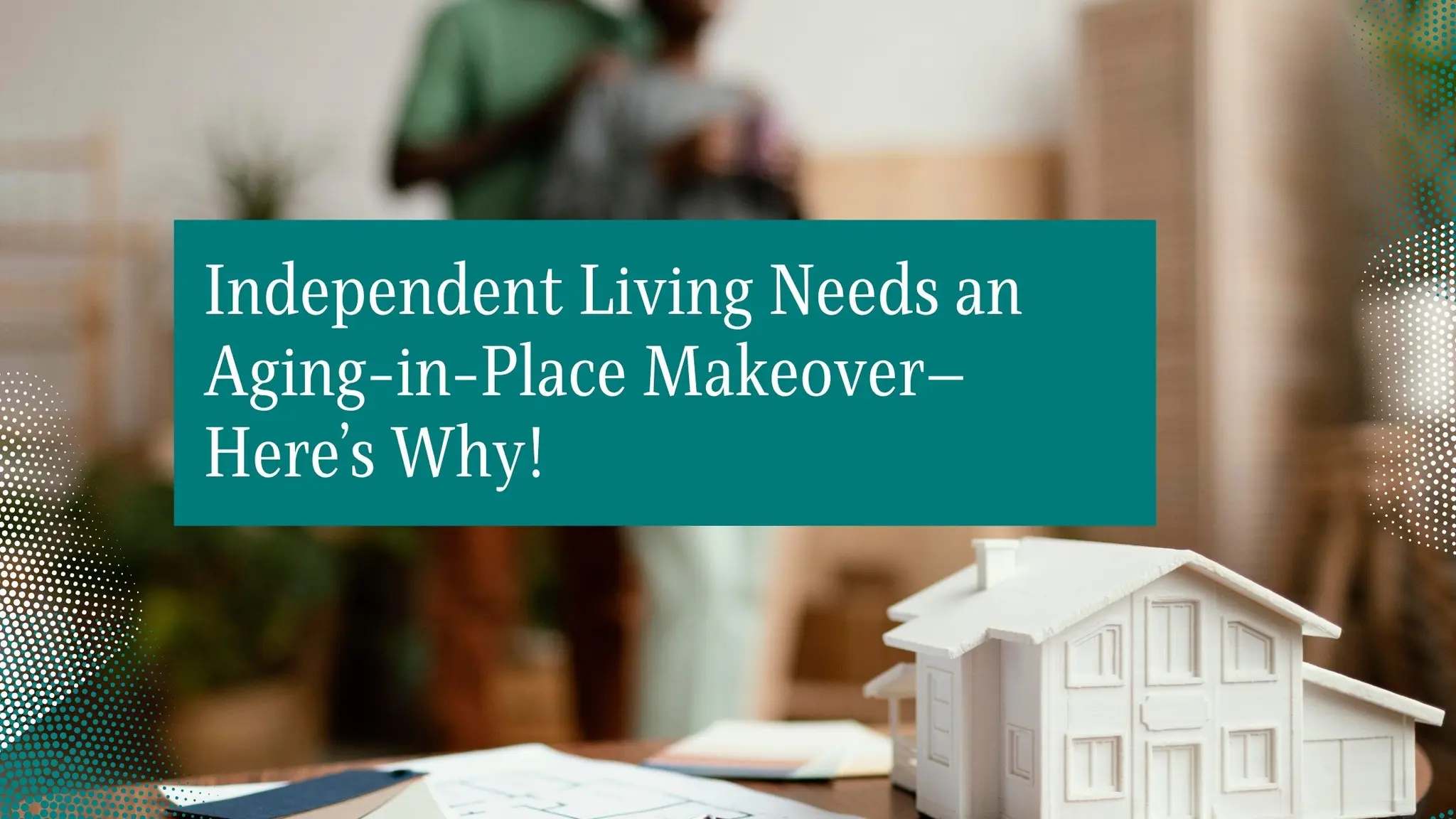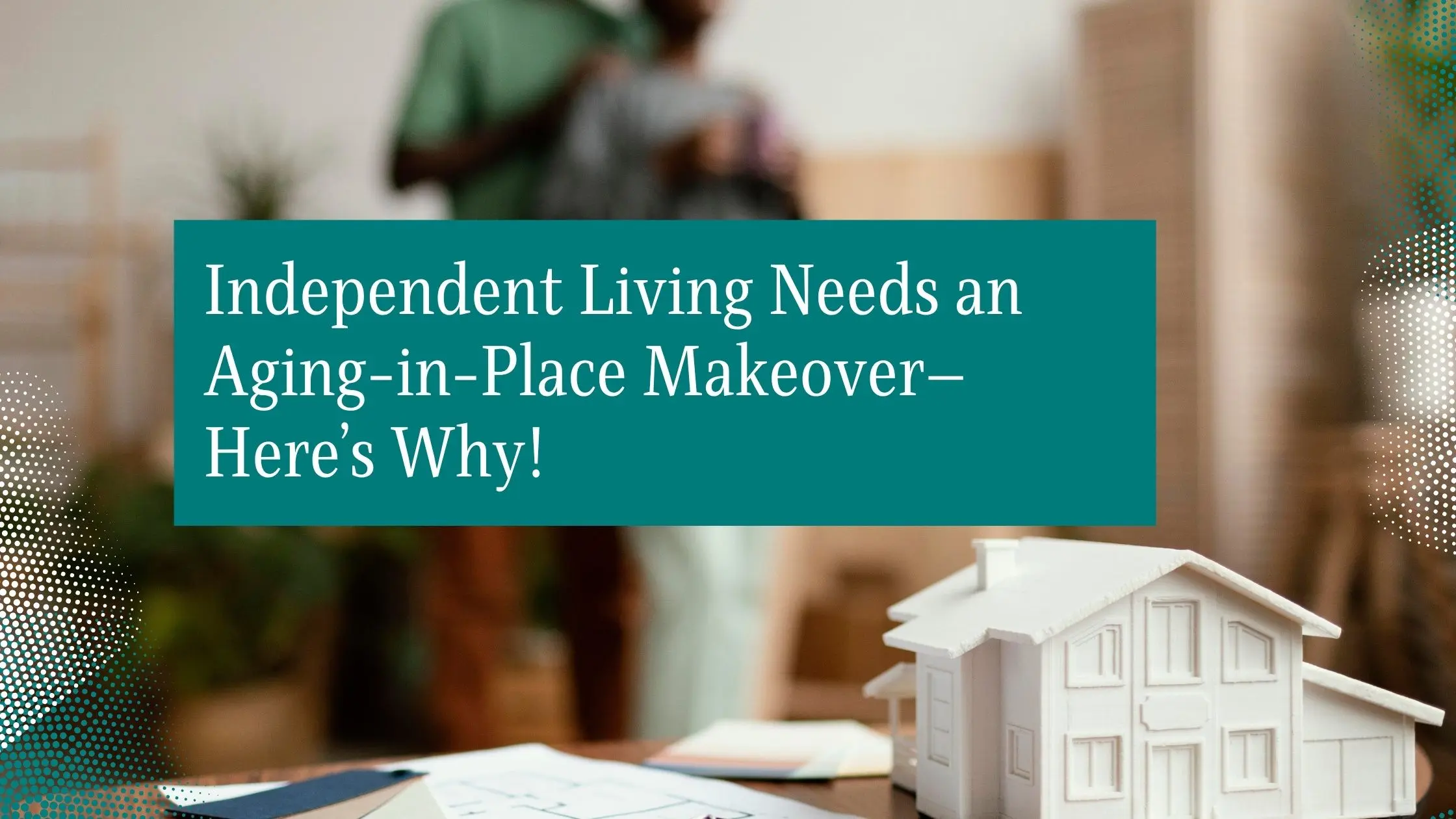Independent Living Needs an Aging-in-Place Makeover—Here’s Why!
Learn how independent living communities can deliver dignified aging-in-place with flexible, affordable third-party care services and longer stays.

Christian Joshua
Published in Assisted Living
Independent living communities have a real opportunity to win over tomorrow’s retirees—if they make aging in place both dignified and flexible, says Fynn CMO and industry veteran Tod Petty. The challenge? Boomers aren’t looking to downsize only to be shuttled off to assisted living the moment they need a little extra help.
Petty points out that today’s retirees expect their housing to evolve with them. They want appealing amenities and a range of services—and when they need help with daily tasks like medication management or dressing, they’d prefer to stay put rather than uproot to assisted living. “That might’ve worked for the Greatest Generation. But for today’s middle-market senior? It’s not sustainable,” he wrote on [LinkedIn] in April.
Under CEO Tim Gary (who also leads Galerie Living), Petty believes independent living operators must be ready to flex with residents’ changing health needs—without hiking costs or cutting corners on quality. His proposal? Bring in third-party medical staff and services directly into independent living communities, rather than forcing a move to pricier assisted living. The payoff: longer stays, stronger occupancy, and access to a broader pool of prospects, he told Senior Housing News.
Get Periodic Updates Straight To Your Inbox. Sign Up To Our Newsletter Today.
- Residential Assisted Living: Everything You Need to Know About Senior Housing and Care
- The Hidden Gems of Senior Home Care: What Every Family Needs to Know
“People are waiting to go in until they really need care, and that’s to preserve their capital, that’s to preserve their relevancy. These are not pension generation folks going in,” Petty said. “We have to be able to flex in independent living and help people age in place.”
He’s not alone. Operators like The Aspenwood Company, Brightspace Senior Living, and Merrill Gardens are experimenting with home health partnerships and licensing independent living units for higher-acuity care, all to keep pace with what incoming residents demand.
Home Health Partnerships and Tech Innovations
Different operators are trying unique tactics to let seniors “settle in and stick around.” Houston’s Aspenwood is teaming up with Bayada Home Health Care at its Village of Morehead community in Charlotte, NC, and even using AI to group residents by lifestyle and interests to smooth the transition. “If we’re able to mitigate those fall risks and have different technology, that’s a win-win,” says Aspenwood President Heather Tussing. Importantly, these services are optional—residents choose what fits their needs and budget.
In Chattanooga, Brightspace Senior Living launched a pilot with a local home health agency this April for its independent living residents. CFO Brian Hendricks notes that if referrals flow from healthcare partners, everyone wins.
Seattle’s Merrill Gardens has gone a step further: nearly all its independent living units are fully licensed for assisted living, so residents can seamlessly shift care levels—and stay in their same apartment—as needs change. “We build all of our apartments the same, whether it’s IL or AL,” explains COO Jason Childers.
By integrating third-party care, these operators boost length of stay, occupancy, and even ancillary revenue. “The goal should be to successfully age by bringing in great third-party partners that can help me successfully age,” Petty says. “Now, I have a more positive aging model than I do when I’m just there to manage the decline of the residents.”
Serving the “Missing Middle” at a Better Price
Independent living typically costs less than assisted living. In fact, assisted living rates jumped about 10% from 2023 to 2024—averaging $5,900 per month and $70,800 per year, according to the 2024 Cost of Care Survey by Genworth (NYSE: GNW) and CareScout. Seniors in the “missing middle”—too well-off for Medicaid but without deep pockets for long-term private pay—feel stuck.
By blending aging-in-place services with an independent living model and tapping Medicare and other payors, operators can deliver meals, apartment living, and in-home care at a lower total cost. “Now, they might be able to move into an independent living that gives them those three meals security, their own apartment with these third-party health care continuums that they might not have to pay for because they have Medicare,” Petty explains.
Brightspace sees home health partnerships as a true path to aging in place—services remain cheaper than a full assisted living move. Other players like Juniper Communities and 2Life’s Opus brand are similarly rolling out à-la-carte and 30-minute care options to tackle both affordability and access.
Lessons Learned—and Some Missteps
Not every model succeeds. The Springs Living tried creating its own in-house home care arm but shut it down due to slim margins and staffing challenges, CEO Fee Stubblefield admitted. The takeaway? Partner smartly, focus on quality and choice, and let seniors control their care journey—right where they live.

Assisted Living
Independent Living Needs an Aging-in-Place Makeover—Here’s Why!
Learn how independent living communities can deliv...

Assisted Living
Residential Assisted Living: Everything You Need to Know About Senior Housing and Care
Residential Assisted Living: Costs, Benefits & Top...

Assisted Living
The Hidden Gems of Senior Home Care: What Every Family Needs to Know
Top U.S. Home Care Services for Seniors: Costs, Be...